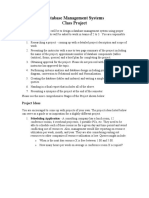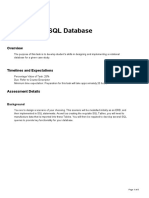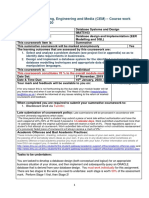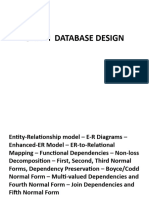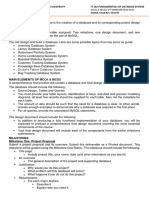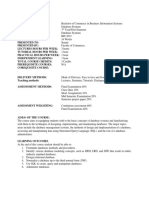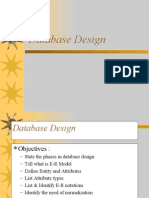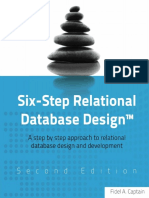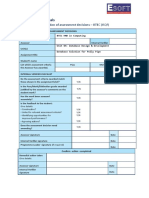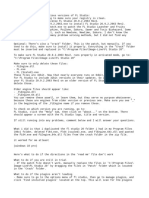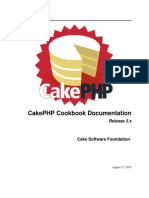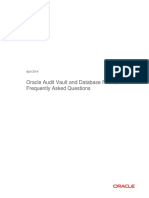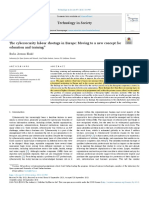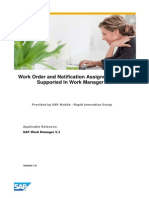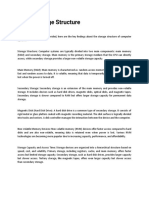0% found this document useful (0 votes)
4 views2 pagesInnovative Assignment DBMS202425
The document outlines a project for students to design an ER diagram and normalization process based on a selected case study, with options for either creating an ER diagram or developing software for normalization. The project requires identifying entities, attributes, relationships, and applying normalization techniques up to BCNF. Learning outcomes include practical application of ER modeling, resolving database anomalies, and gaining hands-on experience with database design tools.
Uploaded by
panenor829Copyright
© © All Rights Reserved
We take content rights seriously. If you suspect this is your content, claim it here.
Available Formats
Download as DOCX, PDF, TXT or read online on Scribd
0% found this document useful (0 votes)
4 views2 pagesInnovative Assignment DBMS202425
The document outlines a project for students to design an ER diagram and normalization process based on a selected case study, with options for either creating an ER diagram or developing software for normalization. The project requires identifying entities, attributes, relationships, and applying normalization techniques up to BCNF. Learning outcomes include practical application of ER modeling, resolving database anomalies, and gaining hands-on experience with database design tools.
Uploaded by
panenor829Copyright
© © All Rights Reserved
We take content rights seriously. If you suspect this is your content, claim it here.
Available Formats
Download as DOCX, PDF, TXT or read online on Scribd
/ 2


